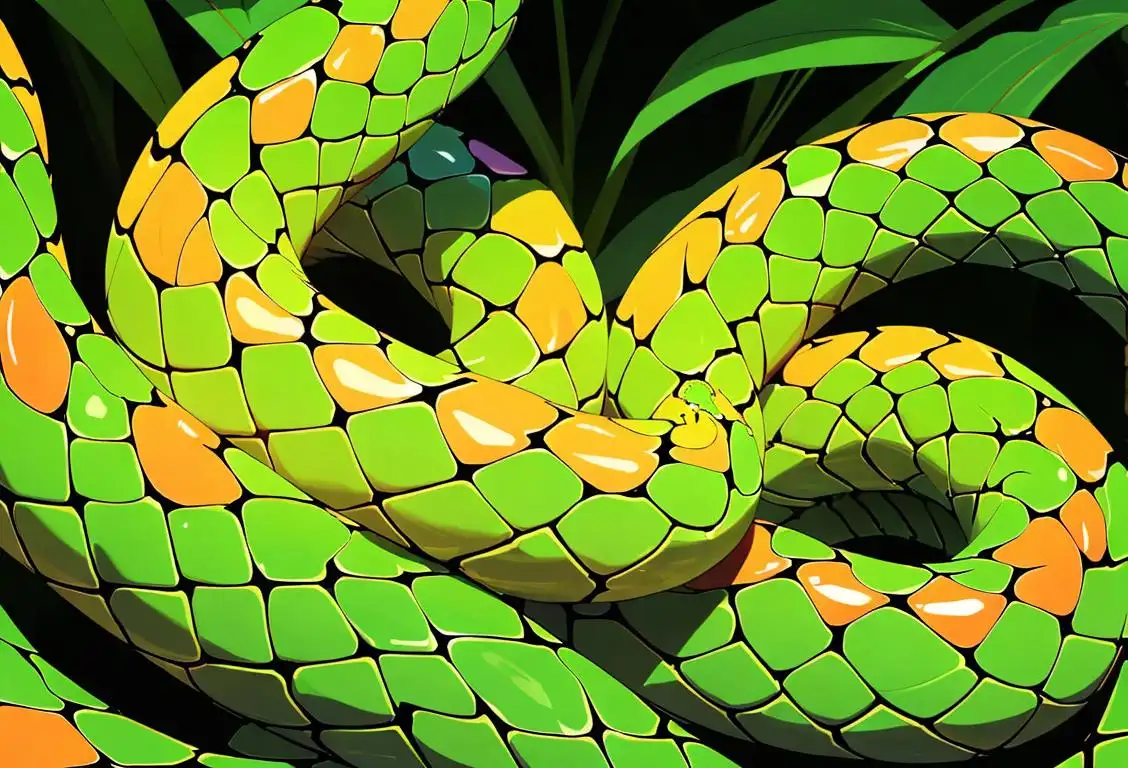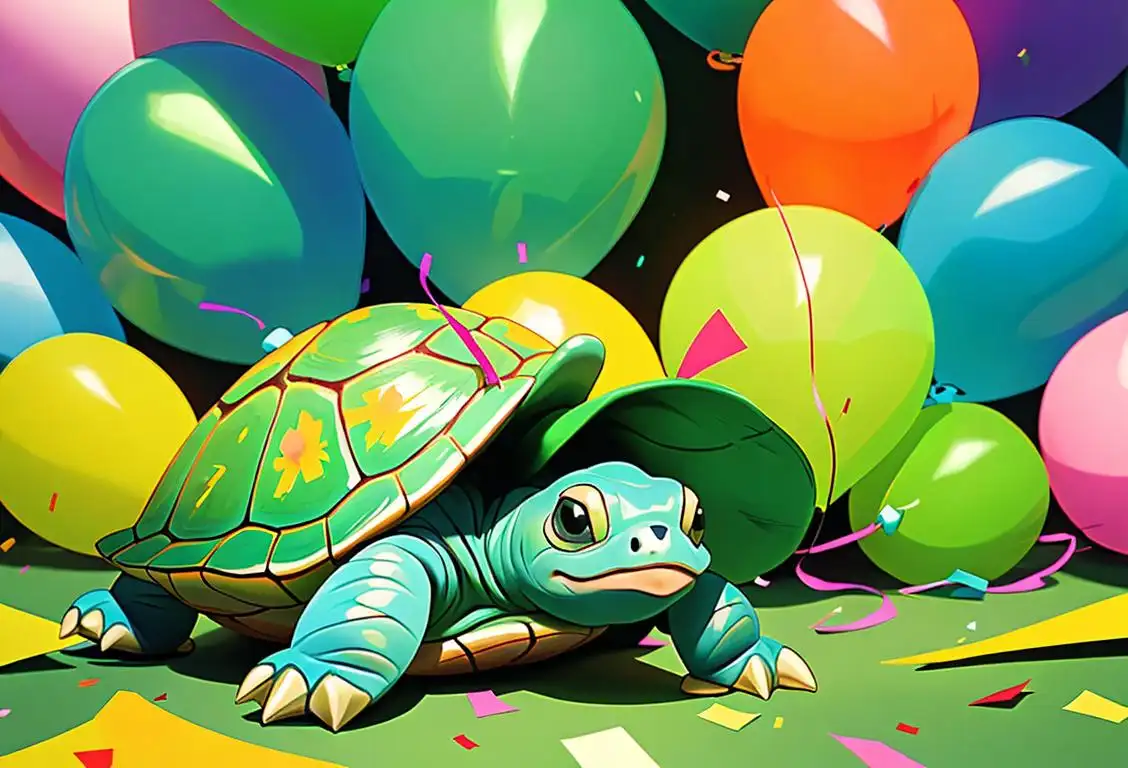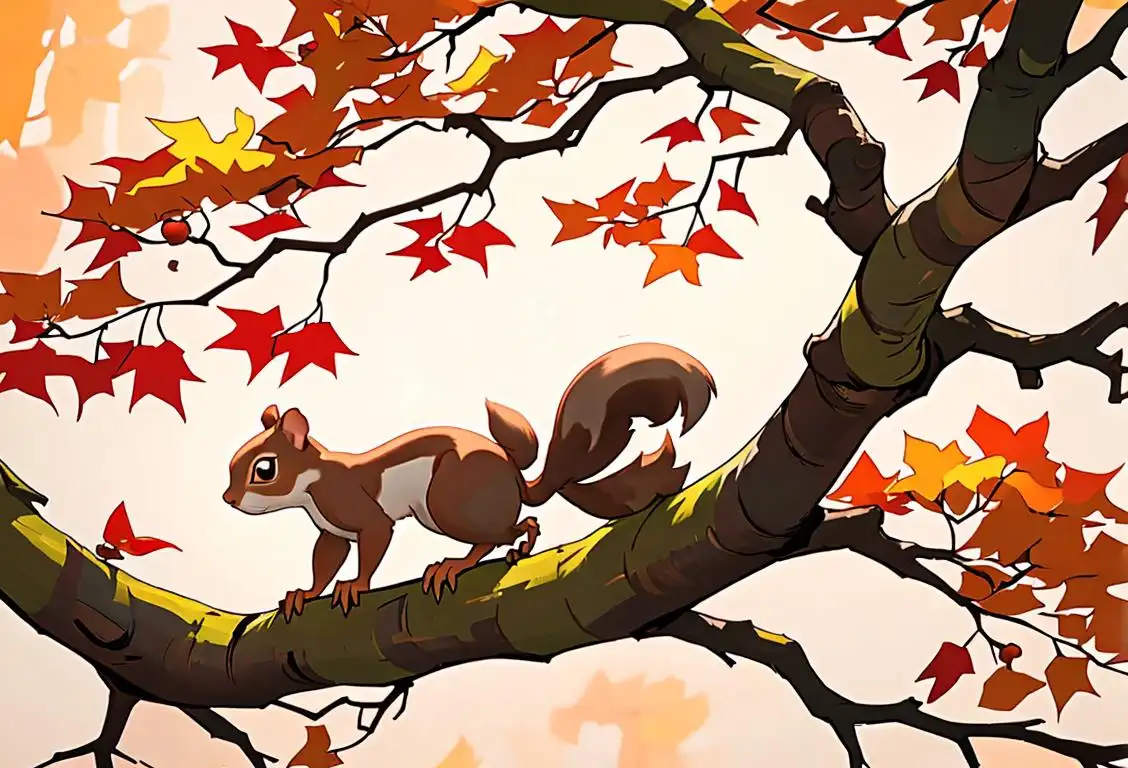National Serpent Day

Ssssssstay tuned, folks, because National Serpent Day is slithering its way into our hearts! On this captivating day, we celebrate these fascinating creatures that have both enchanted and terrified us throughout history. So, grab your snake charm and prepare to learn all about the serpents that have left their mark on the internet and the world.
When is Serpent Day?
It's national serpent day on the 2nd February.
The History of National Serpent Day
While snakes have been around for millions of years, National Serpent Day is a relatively new addition to the world of national days. It first gained recognition in recent times, when snake enthusiasts and advocates decided it was high time to celebrate these slinky creatures in all their splendor.
On this day, people come together to appreciate the beauty and importance of snakes in various cultures, as well as their role in nature as predators and keepers of ecosystem balance. From the awe-inspiring pythons to the venomous vipers, serpents are truly a diverse and intriguing group of creatures.
With 1239 online mentions detected, it's clear that people are excited to share their love for serpents on National Serpent Day. The biggest buzz surrounding this day was on February 2, 2018, when snake enthusiasts from all walks of life flooded social media with snake-inspired posts, photos, and fun facts.
Did You Know?
Did you know that not all snakes lay eggs? Some species, like boa constrictors and vipers, give live birth. It's like a snakey maternity ward in the wild!
History behind the term 'Serpent'
3000 BCE
Ancient Symbolism
The term 'serpent' originated in ancient civilizations, such as Mesopotamia and Egypt, where snakes held significant symbolic importance. In Mesopotamian mythology, the serpent was associated with fertility, healing, and the god Ningizzida. Meanwhile, ancient Egyptians revered the cobra as a protective deity, symbolizing power and royalty.
400 BCE
Greek Mythology
In Greek mythology, the term 'serpent' gained popularity through iconic tales. The legend of the Hydra, a multi-headed serpent-like creature, was a central part of Hercules' Twelve Labors. This mythical beast sparked fascination and fear, reinforcing the idea of serpents as powerful and dangerous entities.
1st Century CE
Biblical References
The term 'serpent' appears prominently in the Bible, particularly in the story of Adam and Eve. In Genesis, a serpent tempts Eve to eat the forbidden fruit, leading to the expulsion from the Garden of Eden. This biblical narrative established the serpent as a symbol of deceit, temptation, and the Fall of Man.
19th Century
Evolutionary Influence
Charles Darwin's theory of evolution, presented in his groundbreaking book 'On the Origin of Species' (1859), contributed to the term 'serpent' gaining additional scientific significance. Snakes became objects of scientific study and fascination, as scientists recognized their evolutionary adaptations and diverse species.
20th Century
Cultural Representations
Throughout the 20th century and beyond, the term 'serpent' continued to be referenced in various cultural contexts. From classic literature like J.R.R. Tolkien's 'The Hobbit' featuring the notorious dragon Smaug, to modern-day films like the 'Harry Potter' series with the Basilisk, serpents retained their captivating and often antagonistic roles.
Did you know?
Did you know that not all snakes lay eggs? Some species, like boa constrictors and vipers, give live birth. It's like a snakey maternity ward in the wild!Tagged
fun animals natureFirst identified
1st February 2016Most mentioned on
2nd February 2018Total mentions
1239Other days
Duck Out For A Drink Day
Mountain Hare Day
Penguin Day
Serpent Day
Hug A Squirrel Day
Bat Appreciation Day
Turtle Day
Squirrel Appreciation Day
Badger Day
Hug Squirrel Day








